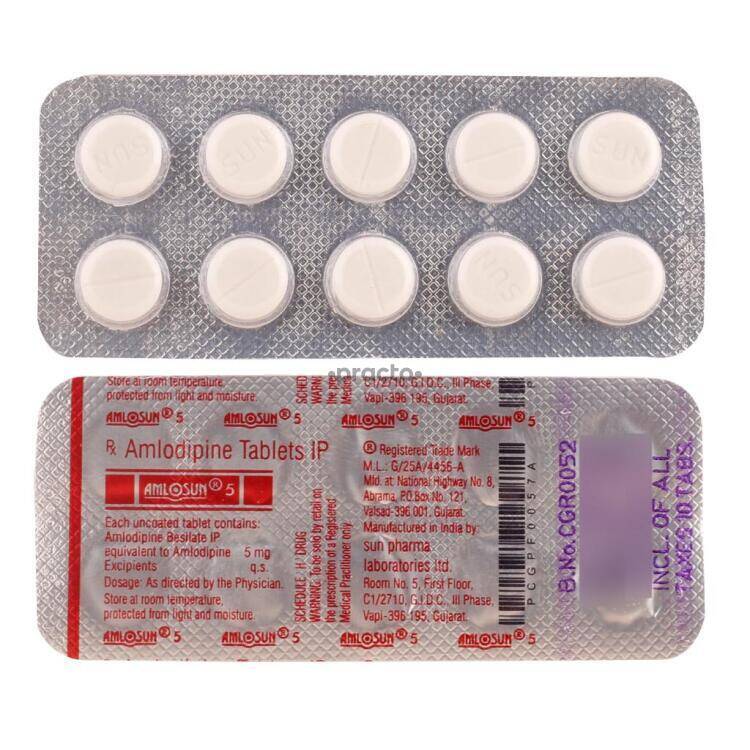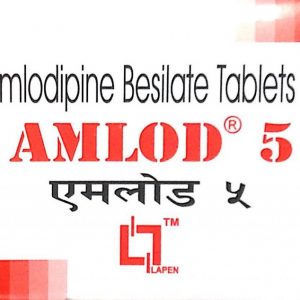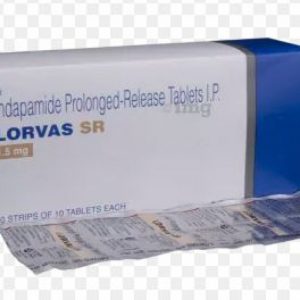Amlodipine
Class: Calcium channel blocker
Action: Inhibits movement of calcium ions across cell membrane in systemic and coronary vascular smooth muscle.
Indications: Hypertension; chronic stable angina; vasospastic (Prinzmetal’s or variant) angina.
Contraindications: Sick sinus syndrome; second- or third-degree atrioventricular (AV) block, except with a functioning pacemaker.
Route/Dosage:
- ADULTS: PO 5 to 10 mg qd. ELDERLY: PO Initially 2.5 mg QD
- HEPATIC IMPAIRMENT PO Initially 2.5 mg qd
Interactions:
Beta-blockers: May cause increased adverse cardiac effects as a result of myocardial depression.
Fentanyl: Severe hypotension or increased fluid volume requirements have occurred with similar drug.
Lab Test Interferences well documented.
Adverse Reactions
CV: Palpitations; peripheral edema; syncope; tachycardia; bradycardia; arrhythmias; ventricular asystoles.
CNS: Headache; dizziness; lightheadedness; fatigue; lethargy; somnolence.
DERM: Dermatitis; rash; pruritus; urticaria.
GI: Nausea; abdominal discomfort; cramps; dyspepsia.
RESP: Shortness of breath; dyspnea; wheezing.
OTHER: Flushing; sexual difficulties; muscle cramps, pain or inflammation.
Precautions
- Pregnancy: Category C.
- Lactation: Undetermined.
- Children: Safety and efficacy not established.
- CHF: Cautious use is required with this condition.
- Hepatic impairment: Cautious use is required.
- PATIENT CARE CONSIDERATIONS
Administration/Storage
Administer medication in morning.
- If patient has difficulty swallowing, crush tablets.
- Store in tightly closed container in cool location.
Assessment/Interventions
Obtain patient history, including drug history and any known allergies. Note any diabetes, liver disease, cardiac disease or sensitivity to calcium channel blockers.
Monitor BP and pulse before administration.
- Review baseline ECG.
Assess for signs of withdrawal syndrome. Abrupt withdrawal may cause increased frequency and duration of angina. Gradual tapering of dose is necessary. - Assess patient for signs of CHF during therapy.
- If chest pain occurs, assess for location, intensity, duration, and radiation. Nitroglycerin preparations may be administered in conjunction with this medication.
- If drug is used with other calcium channel blockers or beta-blockers, observe for intensification of side effects.
- Withhold medication and notify physician if any of the following signs and symptoms occur: Sudden severe dyspnea; edema of hands and feet; changes in ECG (widened QRS, prolonged QT segments); pulse falls below 50 bpm.
- If the patient experiences chest pain not relieved by medication, continue medication and notify physician.
OVERDOSAGE: SIGNS & SYMPTOMS
Nausea, weakness, dizziness, drowsiness, confusion, slurred speech, hypotension, bradycardia, second- or third-degree AV block
Patient/Family Education
- Teach patient how to monitor pulse before taking medication. Tell patient not to take medication if pulse if < 50 bpm and to call physician.
- Explain to patient how to monitor BP daily.
- Instruct patient not to stop taking this medication suddenly because doing so can cause chest pain and MI.
- Teach patient importance of good oral hygiene and frequent visits to dentist while taking medication.
- Inform patient that frequent follow-up appointments with physician are important to adjust medication dosage.
- Caution patient to avoid sudden position changes to prevent orthostatic hypotension.
- Instruct patient to avoid intake of alcoholic beverages or other CNS depressants.
- Advise patient that drug may cause drowsiness, and to use caution while driving or performing other tasks requiring mental alertness.
- Instruct patient not to take otc medications without consulting physician.






Reviews
There are no reviews yet.